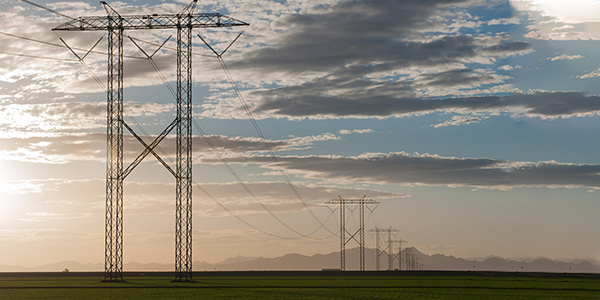The proposed expansion of CAISO’s Western Energy Imbalance Market to a day-ahead market won’t be as voluntary as advertised, some stakeholders argued this week during calls on the ISO’s plans.
CAISO released the straw proposal for its Extended Day-Ahead Market (EDAM) on July 20, followed by stakeholder calls Monday and Wednesday. (See CAISO Proposal Sets Course for EIM Day-ahead.)
A part of the plan that calls for participants to dedicate transmission capacity to the market drew ire.
Mark Holman, managing director of power with Powerex, said the EIM had proven widely popular because of its wholly voluntary nature. Having more mandatory components in the EDAM could make the market less attractive, he said.
“I think we really need to identify that this is not entities joining a multistate RTO with a corresponding design and governance model,” Holman said. “The EIM has worked well residing in parallel with other market opportunities.”
The proposal for the EDAM kicked off two years ago after the last failed attempt to create a Western RTO led by CAISO. (See CAISO Takes Step Toward EIM Day-ahead Market.)
Western entities have been happy to do business through CAISO’s EIM — which has reaped $1 billion in benefits for participants, CAISO said Tuesday — but they are wary of giving Californians too much control.
To allay concerns, CAISO has made the EDAM’s voluntariness a centerpiece of its efforts, stressing that the EDAM would be much like the EIM and not like an RTO.
“The approach contemplated in this effort does not require full integration into the CAISO balancing authority area as participating transmission owners, nor does it require formation of or participation in regional transmission organization,” the ISO said at the start of its straw proposal.
In his presentation Tuesday, Don Tretheway, the ISO’s principal for market design policy, said one of the proposal’s main principles is that the EDAM will be a voluntary market and won’t assume responsibility for transmission planning, resource procurement and other key functions of an RTO.
However, CAISO said the EDAM will require a different approach to transmission usage than the EIM.
“EIM participants make transmission available to support energy transfers through contributions of interchange rights holders or available transmission capacity,” the straw proposal said. “This transmission supports energy transfers between balancing authority areas at no transmission usage rate.”
In contrast, “transmission to support EDAM transfers must have the same curtailment priority as internal load in each balancing authority area in order for energy and capacity schedules from the source balancing authority area to the sink balancing authority area to assure confidence for the sink balancing authority area,” it said.
‘Turn them over to the EDAM’
Jeff Spires, director of power with Powerex, said entities that rely on transmission to reach customers could get sidelined by the EDAM’s protocols.
Powerex markets BC Hydro’s excess hydroelectric power, much of it to California. The company chafed under EIM market rules in the past because of transmission constraints at the U.S.-Canada border. (See Troubled Waters for Powerex in EIM.)
Spires gave an example Tuesday of potential problems with EDAM’s transmission model involving transfers through the Bonneville Power Administration’s BAA, which covers a vast swath of the Pacific Northwest. Transfers from Canada to California pass through BPA’s territory. BPA is slated to join the EIM in 2022.
“If you were to take a balancing authority area like the Bonneville Power Administration, they have many third parties in their BA,” Spires said. “They have many different transmission customers, and between BPA and some of the other service providers, there’s about 8,000 MW of transmission capacity from the BPA system down to California.
“If BPA were to join the EDAM, then under this design, all of those transmission customers would no longer have the ability to use their physical transmission rights under the [open access transmission tariff] in order to deliver their resources to California,” he said. “The only way that they could make use of those rights is to instead turn them over to the EDAM for market use.”
Such a scenario is incompatible with a voluntary market, he said.
Tretheway told Spires, “You should still be able to self-schedule from your resource all the way to CAISO under the EDAM.”
Spires responded, “I just don’t think we share the same perspective on this.”
Mark Rothleder, CAISO vice president for market policy and performance, said ISO managers were still working on the EDAM’s transmission design.
“We hear what you’re saying, and we understand your concerns,” Rothleder told Spires. “I don’t have an answer at this point. This is a little bit of a tough nut to crack on this one.”
The straw proposal addresses only the first “bundle” of topics in CAISO’s EDAM initiative: resource sufficiency rules; use of transmission; and the distribution of congestion and “transfer” revenues — the last being a new concept introduced in the plan to accommodate flows across BAAs in the West.
Comments on the first-phase straw proposal are due to CAISO by Sept. 10. The ISO’s Board of Governors and the EIM Governing Body are scheduled to take up the EDAM plan next year.




